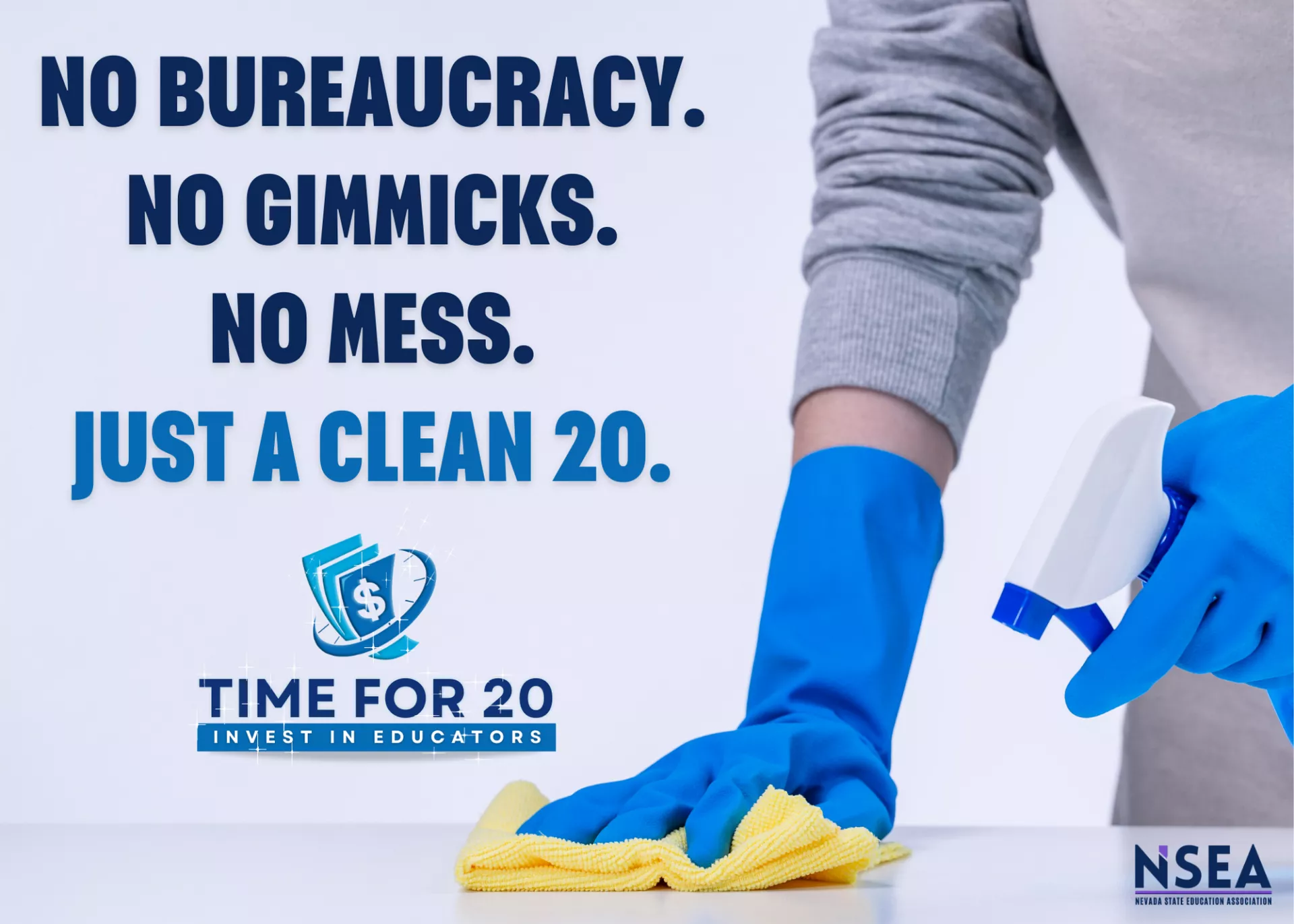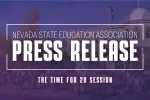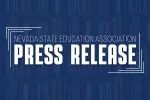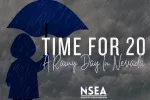While NSEA appreciates the intent of Senate Bill 231 to deliver raises to Nevada educators, we have serious concerns about the bill as introduced and are working on alternate language to deliver raises to every Nevada educator.
SB231 leaves behind a majority of Nevada school districts.
Every Nevada educator deserves a raise. That’s why NSEA has concerns with the overall construct of the bill as a matching program. In the Governor’s recommended budget, three school districts are projected to receive no additional per-pupil funding for next biennium (Esmeralda, Eureka, and Storey). Six additional districts are projected to only emerge from their frozen per-pupil amount over the next two years (Carson, Douglas, Elko, Humboldt, Lincoln, and Pershing). These 9 Nevada school districts will likely have limited ability to produce the other sources of funds necessary to access the matching funds provided in SB231, especially as fixed, non- personnel costs have increased dramatically since FY20. Therefore, the mechanism provided in SB231 will likely fail to provide significant raises for educators across a majority of Nevada school districts.
An unintended consequence of SB231 could be even larger class sizes.
In the zero-sum game of district budgeting, there is often a see-saw effect between employee compensation and class size. With limited funds, increased educator pay can mean larger class sizes and vice-versa. NSEA is concerned SB231 could incentivize districts to sacrifice efforts at reducing class sizes to access matching funds. For classroom educators, the issues of educator pay and class size are both of critical importance. That’s why NSEA’s Time for 20 campaign balances the goals of increasing educator pay while also reducing class sizes.
SB231 literally leaves out thousands of educators who make our schools run.
SB231 clearly specifies eligible educators as “teachers, other licensed education personnel or paraprofessionals”. Sadly, education support professionals, other than paraprofessionals as defined in NRS 391.008, are left out. Education support professionals are the backbone of our public education system, keeping schools running while ensuring students are safe, healthy, and ready to learn. In addition to paraprofessionals ESPs include bus drivers, nutrition workers, custodians, IT workers, clinical aides, administrative assistants, library aides, and building and grounds maintenance. While NSEA does not advocate for raises for other bargaining units like administrators, we believe in most instances, these bargaining units will negotiate increases similar to teacher units, so leaving them out of the bill ultimately will lead to less district monies for ESP increases.
**NSEA was able to get this portion amended. All ESPs are now included, but we would have preferred if this had never been an issue. Our ESP's should have never been forgotten from the beginning.
School district concern over the one-time nature of funds in SB231.
NSEA has already heard concerns expressed by the Clark County School District that SB231’s appropriations are one-time funds, and they are hesitant to use them to cover an ongoing cost like educator pay. They have instead discussed the possibility of educator bonuses. While bonuses are ok in certain situations, Nevada educators are in desperate need of ongoing salary increases, as our inflation-adjusted salaries have dramatically decreased in recent years.
SB231 is another example of a flawed legislative process.
SB231 is a leadership bill with the sponsorship of a majority of Nevada legislators addressing one of the most important topics of the 2023 Legislative Session, yet the bill was developed without the input of most education stakeholders, including school districts, superintendents, school board members, education advocacy groups, parent groups, the Department of Education, and most education unions and educators. When a bill of such importance is only vetted through a single stakeholder organization, it should come as no surprise it is riddled with problems.
SB231 falls short of a stated goal of 10% raises as well as the 20% gold standard set in Time for 20.
During the initial rollout of the $250M matching program in February, the single organizational supporter claimed the funds “equate to a 10% increase in salaries for all educators, licensed professionals and support staff in the first year of the upcoming biennium, as well as an additional adjustment to account for inflation in the second year. However, according to the Clark County School District, these funds would not cover the district’s costs of a 10% increase for just that single school district. Furthermore, even a 10% increase in educator pay falls grossly short of what is needed to hire and retain educators to teach our students and make our schools run.
This is why NSEA has been saying it’s Time for 20.
Time for 20 means a 20% raise for every Nevada educator, a $20/hour minimum wage in our schools, and average class sizes of 20 students. Since the COVID pandemic, educators left their jobs in record numbers due to low pay and severely low morale. At the mid-point of this school year, there are still thousands of school vacancies, with many more positions being covered by long-term substitutes or, in some of our rural areas, privately contracted virtual teachers. A December report from the Economic Policy Institute found there is a widespread national teacher shortage that is especially severe here in Nevada. They found the current shortage is not the result of an insufficient number of qualified teachers, but rather low pay and an increasingly stressful work environment. The average pay differential between teachers and similar college graduates in the job market has grown to 23.5%. While critical to the operations of schools, education support professionals tend to be at the bottom of district pay scales, with some ESPs making as little as $11/hour and an overwhelming majority making less than a living wage. Last year, over 1600 CCSD workers were enrolled on Medicaid. Education support professionals usually reflect the Nevada communities they serve, with about half of education support professionals across the state being people of color. A 20% raise is only necessary to help districts fill vacant positions, it is also necessary to pull thousands of education workers out of poverty – an issue of both economic and racial justice.
NSEA is working on language to deliver a clean 20 for Nevada educators.
With billions of dollars recommended for reserves with $1.6B in the Rainy-Day Fund and $733M in the Education Stabilization Fund, more than enough resources are available to fund and sustain 20% educator raises and guarantee every education employee makes a living wage. NSEA is working on language that meets the challenges we are facing by providing every Nevada educator with a “clean 20”. We look forward to working with you to make this work for every Nevada educator.





